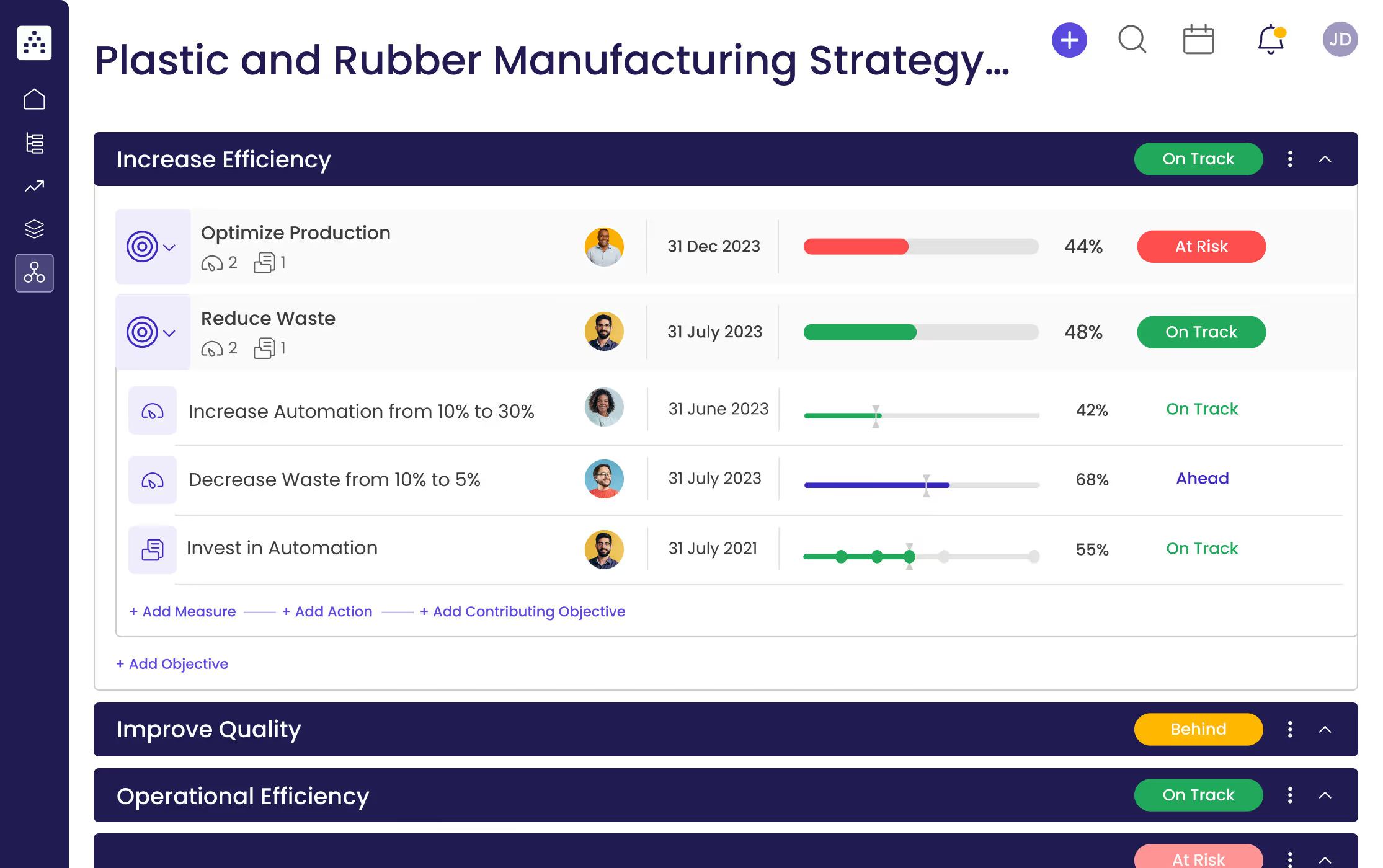What is a Plastic and Rubber Manufacturing Strategy?
A plastic and rubber manufacturing strategy is a plan of action that outlines the goals, objectives and long-term plans for a business in this particular industry. It serves as a guide for decision-making and helps ensure that the company is working towards achieving its goals and objectives. A strategy should include a clear and achievable vision for the company, an analysis of the current situation, an identification of the key issues and opportunities, a plan of action and a timeline for implementation.
What's included in this Plastic and Rubber Manufacturing Strategy template?
- 3 focus areas
- 6 objectives
- 6 projects
- 6 KPIs
Each focus area has its own objectives, projects, and KPIs to ensure that the strategy is comprehensive and effective.
Who is the Plastic and Rubber Manufacturing Strategy template for?
The Plastic and Rubber Manufacturing Strategy template is designed to help plastic and rubber manufacturers create a comprehensive strategy that will enable them to effectively manage their operations and achieve their goals. The template provides a clear structure that can be easily customized to meet the unique needs of each business. It provides guidance on how to define focus areas, set objectives and measurable targets, and implement related projects.
1. Define clear examples of your focus areas
Focus areas are the main areas or topics of your strategy. Examples of focus areas for plastic and rubber manufacturer strategies include increasing efficiency, improving quality, and increasing productivity. When defining focus areas, it is important to consider the goals and objectives of the business, as well as the current situation and key issues or opportunities.
2. Think about the objectives that could fall under that focus area
Objectives are specific goals that are designed to help you achieve the desired results from your focus area. These should be measurable, achievable and time-bound. It is important to ensure that the objectives are aligned with the goals of the business.
Examples of some objectives for the focus area of Increase Efficiency could be: Optimize Production, and Reduce Waste.
3. Set measurable targets (KPIs) to tackle the objective
Measurable targets, or key performance indicators (KPIs), are measurable goals that are used to track progress towards achieving the objectives. These should be specific, measurable and achievable. For example, a KPI for increasing efficiency could be to increase automation from 10% to 30%.
4. Implement related projects to achieve the KPIs
Projects, or actions, are the specific steps that need to be taken in order to achieve the KPIs. These should be well-defined, achievable within the given timeframe and resources available, and should be tailored to the individual strengths and capabilities of the business.
An example of a project related to Increase Efficiency could be: Invest in Automation.
5. Utilize Cascade Strategy Execution Platform to see faster results from your strategy
The Cascade Strategy Execution Platform is a powerful tool for helping businesses manage and track their strategies. It provides an easy-to-use dashboard that allows users to set objectives, create projects, set targets and track progress. The platform also provides detailed analytics to help users measure their progress and make informed decisions.


